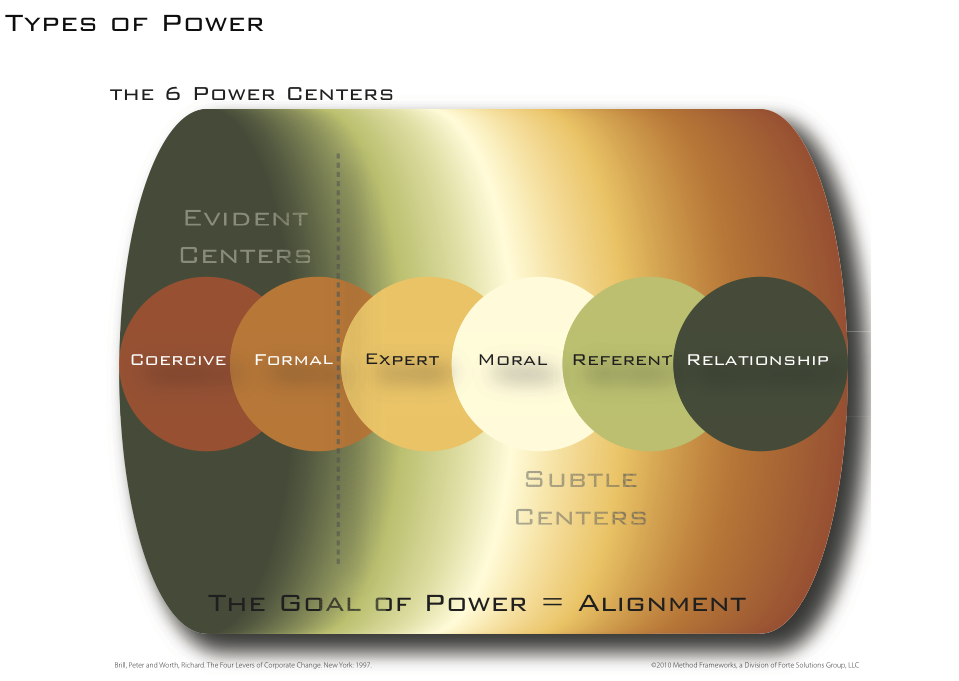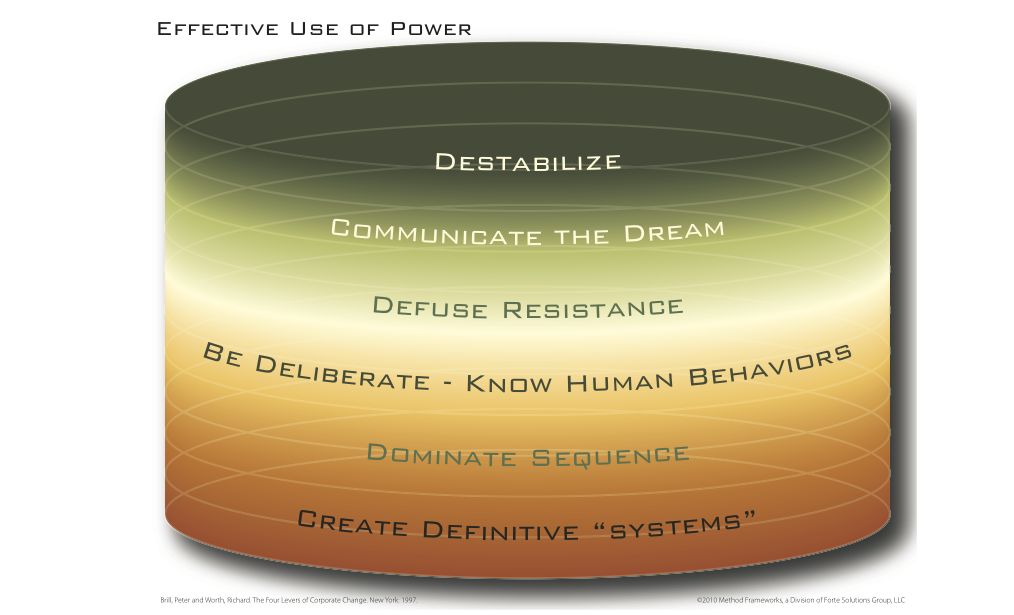The “Not So Dirty” Five-letter Word

 Why is it that most managers shy away from the “power” word? This appears especially true in a society where attitudes of entitlement prevail and empowerment is a popular leadership notion. The word “power” has negative connotations. Yet a dictionary definition of power is the “ability to act or produce an effect”. It turns out that power, when applied appropriately, is exactly what it takes to promote action and make transformation happen.
Why is it that most managers shy away from the “power” word? This appears especially true in a society where attitudes of entitlement prevail and empowerment is a popular leadership notion. The word “power” has negative connotations. Yet a dictionary definition of power is the “ability to act or produce an effect”. It turns out that power, when applied appropriately, is exactly what it takes to promote action and make transformation happen.
But it needs to be the right type of power.
Potential change agents tend to possess power, but some “power types” are better than others when it comes to selecting change agents.
Coercive Power
Coercive power is often held by an individual with the ultimate authority to fire subordinates. While the mere threat of coercive power may be enough to elicit a reaction from employees, it is insufficient to produce the type of “game-changing” change we seek from a change agent. Instead, coercive power often produces covert defiance and resistance among individuals – the opposite of what we’re looking for.
Formal Power
Formal power gives an individual the power to change corporate structures, create new compensation systems, and allocate resources differently. While these elements are essential, when looking at strategic transformation it is not enough, in and of itself, to produce game-changing change.
Expert Power
Expert power is a necessary ingredient in the transformation process, and one that we should look for in a change agent. These leaders tend to have a positive impact on staff members who believe recognize and respect the leader’s expertise and track record. These leaders as believed to have a unique ability to see the organization more clearly and understand problems more accurately than anyone else in the organization.
Moral Power
Moral power can be another effective quality of a change agent. These leaders look to seize the organizational high ground by using inspirational language to define the organization’s vision. Of course, for a vision to be effective, a leader must embody its tenets. And the vision must be believable and authentic. It is not worthwhile to preach product quality when employees see that is really being rewarded is the number of products that are released.
Referent Power
Celebrities, patriotism, and other well-respected people hold referent power. Wikipedia defines referent power quite appropriately as, “Individual power based on a high level of identification with, admiration of, or respect for the power holder.” Those with referent power inside your organization are excellent candidates to become change agents as their influence and leadership are driven by the value and respect others have of them.
Relationship Power
Relationship power can also be an effective quality in a change agent. This type of power is derived from competencies such as humor, charm, and great soft skills. Relationship power is held by people in many types of relationships and is hallmarked by the, “do it for me” favor.
Six Ways to Effectively Use Power Centers
1. Destabilize – Create a crisis or hire a change agent that will be empowered to shake people up.
2. Communicate – Clearly articulate an inspired vision for the change and the overall organization.
3. Defuse Resistance – Exploit channels of influence, like relationship power. Fragment old alliances, causing the organization to create new alliances and establish power at lower levels within the ranks.
4. Be Deliberate – Know human behaviors – and do not overlook them. Understand the needs and self-interests of staff members. By using some power to satisfy a portion of those needs, it is possible to create alignment with the transformation process.
5. Dominate Sequence – Use the power as leader to determine how the change / transformation process will begin.
6. Create Definitive “Systems” – Leaders need to be at every level of the organization to champion the transformation process. Those who have been selected as transformation leaders will need the appropriate training to know how they should behave, what is expected of them, how to operate in the changing environment and how to use their own power to carry out the change sequence. [1]
[1] Brill, Peter and Worth, Richard. The Four Levers of Corporate Change, New York: 1997
Category: Business Growth & Strategy
Tags: Management, Managing, Power, Strategy



i just came by your article and it get my attention. i thought i’ld leave my first comment just to appreciate the hard work you done.
Business Loan